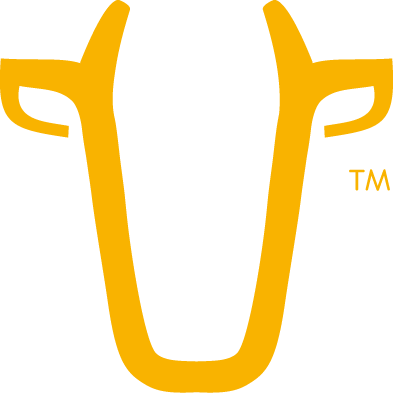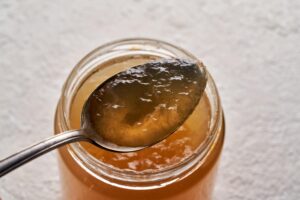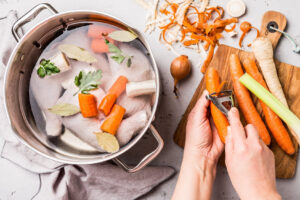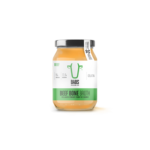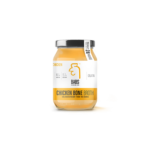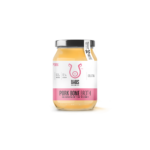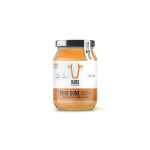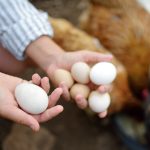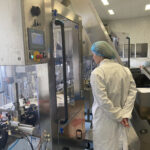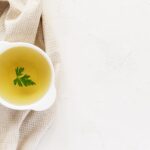This is one of the greatest challenges a lot of us face in clean, whole eating. You can walk into almost any grocer today and opt for the organic and locally grown fruit and veggies, organic legumes, nuts, and seeds, and other plant-based foods. You know then, your food is pesticide-free, has been grown without chemical fertilizers and you could say, was produced humanely as far as plant life is concerned.
When it comes to your animal-based proteins, however, things become more complex. This is because there are more factors that plug into the equation to yield the perfect meat, eggs or dairy protein sources. And, a lot of flexibility and varied interpretations when we look at farming terms.
Bone Broth for Runners and Triathletes: A Great Training Aid for Hard Workouts
Whether you’re training for your first 5K run or you’re a seasoned triathlete,...
Read MoreWhat is gelatin?
Gelatin is a great source of nutrients that are widely beneficial to your...
Read MoreWhat is bone broth?
The methods for making bone broth today have been modernized for efficiency, sanitation,...
Read MoreOrganic vs Industrial Farming
First, it’s important to keep in mind, industrial farming techniques are relatively new. What we think of when we say commercial, conventional, or industrial farming – the use of chemical fertilizers, developed seed varieties, and heavily mechanized methods – only started about mid-way through the 20th century.
These methods went on to include the chronic use of hormones and antibiotics and increasingly questionable practices for animal farming at scale.
- Overcrowded barns where chickens and hens may spend their entire lives, often in cages.
- Pigs raised in overcrowded warehouses, wading through their own manure.
- Cattle may live outdoors, but they spend most of their times on crowded feedlots without shelter. Practices such as castration, horn removal and branding are still common.
Before industrial farming, methods were essentially organic as chemical inputs weren’t used. Farms, for the most part, were much smaller than the commercial farms we see today. There wasn’t the overcrowding, and all the issues of increased risk of disease (and the subsequent increased need for antibiotics), and the sacrificing of animal well-being in order to cut the costs of large scale production that we often see today.
Organic farming is a more holistic approach to farming. Eating organic protein sources does help to cover some bases of chemical-free, healthy, humane eating. Organic animal farming requires farmers to use organic feed, to not use antibiotics or hormones, and to ensure the animals are raised with relatively humane living conditions.
But, there’s a catch most consumers don’t realize.
The organic farming standards, even more so outside of the EU, are open to interpretation. You probably assume your grass-fed beef and cage-free organic eggs come from animals that get to move freely outdoors in the sunshine, breathe plenty of fresh air, and experience a reasonable quality of life. Sometimes they do, but it isn’t always the case.
The reality is, there are certified organic farmers who are raising animals in conditions that are not that much different than what goes on in a factory farm. The sheer number of terms – organic, pasture-raised, grass-fed, cage-free, free-range – also makes the discrepancies between industrial and organic even grayer.
And, it’s also important to note, there are non-organic farms, even industrial large scale producers, who practice a hybrid mix of techniques, using fewer chemical inputs and providing healthy living environments for their animals. There are also smaller farms who follow biodynamic, sustainable, organic practices, but who aren’t certified simply because getting certified is expensive for the farmers themselves.
Let’s take a deeper look into modern farming practices to help you learn how to source clean, healthy, humane protein.
“When you truly weigh the choice – is healthy, clean eating more expensive? Or is there a higher price to pay for purchasing and consuming foods from factory-farmed animals?”
Unraveling Cage-Free and Free-Range Terminology
Cage-free specifically means, the birds do not live in a cage. That doesn’t mean they ever go outdoors, breathe fresh air, soak in the sun, or enjoy fresh growing foliage and buzzing insects around the farm. Hens that live in a barn and never go outside are still defined as cage-free.
Even free-range eggs don’t always come from happy, content birds, wandering through lush fields as we imagine. Free-range regulations only require the birds to have access to outdoors.
When you break it down, the terms cage-free and free-range are misleading. It is a step up from nothing, but unless you know the conditions of the farm where you buy your eggs from, or your chicken, ‘better’ may be a negligible difference.
Take for example, the 2016 investigation into a cage-free Costco facility. The investigators found that the birds were actually attacking and cannibalizing each other. In 2017, Snowdale, one of Australia’s largest egg producers, was fined over $1 million for falsely claiming free-range status. When it comes to modern animal farming, what we read on the package, isn’t always what we get.
In Australia, the government just recently passed a law, in 2017, loosening standards for free-range status. This means, consumers are left to search for the stricter accreditation schemes like Humane Choice and Free Range Farmers Association, which require more space and more time outside in order for an egg producer to wear their label.
In the EU, regulations are stricter. Eggs labelled as organic must also be free-range and the birds must have constant daytime access to vegetation.
Free-range, organic eggs aren’t just more ethically sound, they are also more nutritious. Studies have found higher amounts of vitamin D (when the birds are exposed to sunlight), omega-3 fatty acids, vitamin A, and beta-carotene.
This isn’t surprising when you think about it. When hens are outside, their diets include a greater variety of vegetation and insects.
You can see the difference yourself. Crack open a commercially farmed egg and an organic, free-range egg from a trusted producer. You can see the difference in the richer, bright yellow-orange yolk.
Just keep in mind, color doesn’t always mean more health benefits. Some producers include additives like dried algae, marigold petal meal and alfalfa meal in the feed to achieve that oranger color.
Pasture-Raised, Organic Pork
In factory farms, pigs are raised in large warehouses with unhealthy conditions, like close quarters and manure build-up – creating a toxic environment that can cause the animals to become ill, so they are regularly given antibiotics to prevent disease. For sows, it is extremely unpleasant – they are often kept in metal cages with limited space to prevent movement and are subject to regular breeding via artificial insemination.
These conditions also are horrific for the environment. In the warehouses, factory farmers have to do something about the tons of created waste. In conventional farming, it may be drained into a large lagoon, which then has to be regularly emptied. It’s also common, and totally legal, to blast the manure into the air in a sort of manure cannon over the farm’s crops. This serves to get rid of the manure and to fertilize the crops – with old, putrid pig manure. This airborne fecal matter then also contaminates the nearby air and water sources and impacts the people living nearby.
Pasture-raised, organic pigs on the other hand, have to spend some part of their lives outdoors. As with cage-free and free-range eggs, you want to look for more information to ensure the animals have more than minimal time outdoors and aren’t subject to other unhealthy or inhumane conditions. Look for Animal Welfare Approved meats (granted to independently owned family farms that provide plenty of outdoor time and only use antibiotics when recommended by a vet) and Global Animal Partnership Steps 4 to 5 and 5+.
What to Look for in Dairy and Beef
With dairy cows, you want the animals to be grass-fed, pasture-raised, as well as organic. Cows naturally eat grass. However, in the US, over 80% of lactating dairy cows are not kept in pasture to graze on grass and move around freely in the sunshine. They are housed indoors and fed soy, corn, and hay, in order to increase their milk production.
With beef cattle, one of the major problems is the heavy use of antibiotics. The US Centers for Disease Control have found that the use of low doses of non-therapeutic antibiotics is partially behind the “emergence of antibiotic-resistant bacteria in food-producing animals.” The CDC then goes on to explain that when we consume these foods, guess what? We can develop antibiotic-resistant infections as well. It can also be transmitted through the water supply and the environment. It is estimated that 2 million are infected, and 23,000 people die each year from antibiotic-resistant bacteria.
Choosing organic, humanely raised, grass-fed meat isn’t just about better health, it’s about supporting the farmers who are using sustainable, healthy practices, rather than those who are harming not just the animals and our health, but the environment we all share.
Look for certified organic beef, and other meats – which means chemicals or sewage sludge isn’t a part of the food chain, hormones and antibiotics aren’t used, and the animals have access to pasture. You also can look for Animal Welfare Approved, as with your pork, and American Grassfed Certified, a certification for beef, bison, goat, lamb and sheep that means the animals are able to forage and are never confined to a feedlot. Also, they aren’t ever treated with antibiotics or hormones.
Biodynamic certification is another level to look for that indicates a high quality of life – and therefore a healthier protein source for you. Established in 1928 and managed by Demeter International, it requires the entire farm to be certified. Animals are treated humanely, crops and feed are organic. Biodynamic preparations are regularly used and a portion – at least 10% – of the farm is designated specifically for biodiversity.
But, All These Certifications Raise the Price of Food!
But, when you look at what is going on in farms all over the globe, how it impacts human health in terms of increased health risks to you and society and the reduced nutritional value, and the environmental impacts, you have to look at value, not price.
You are getting a greater value when you shop for clean, organic, humanely raised protein sources. Not just in that one meal – when you sit down to your free-range, nutrient-packed poached eggs and avocado or your epic steak salad, made with biodynamic beef and organic veggies – you’re supporting your health in the long run, the health of your family, that of your community, and the global community. Your grocery bill may be five or six dollars more each week, but what about your lifetime health costs – or the burden we all bear in the health and environmental costs to society as a whole?
When you truly weigh the choice – is healthy, clean eating more expensive? Or is there a higher price to pay for purchasing and consuming foods from factory-farmed animals?
